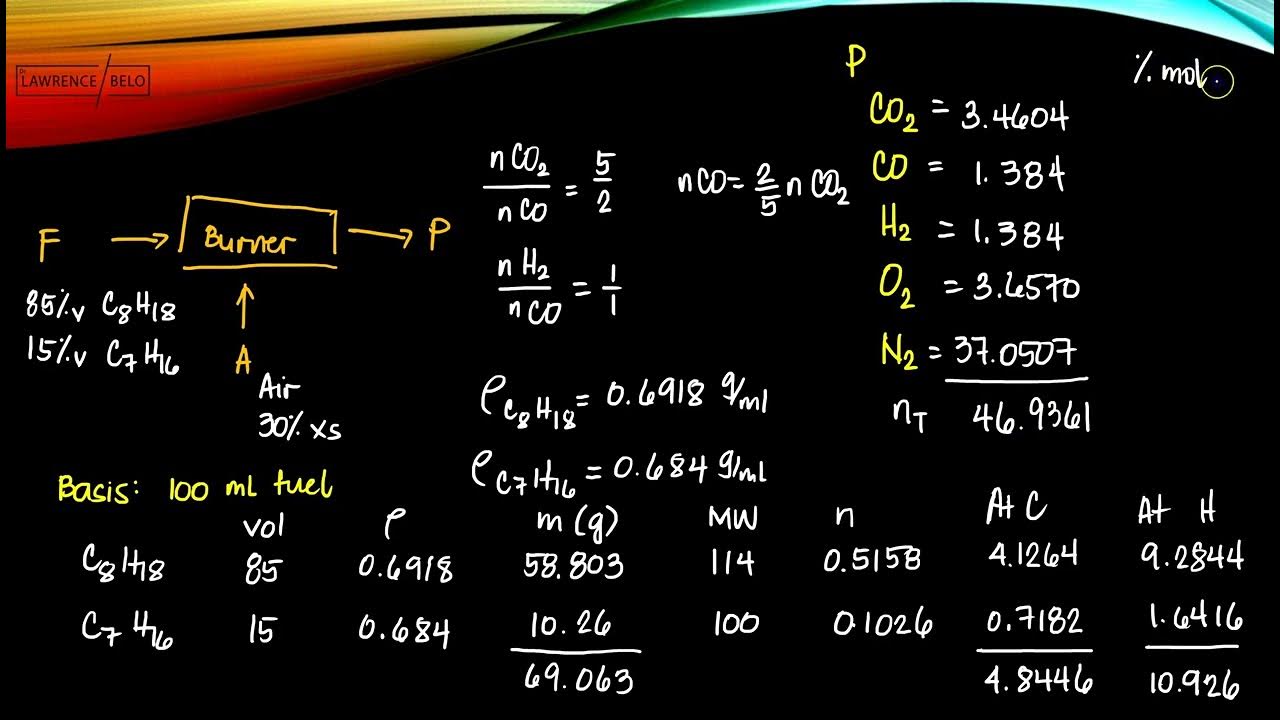La combustione di una candela
Summary
TLDRThis experiment explores the combustion of a candle and the behavior of gases during this process. It begins by explaining how oxygen, a key element in combustion, is consumed by the candle, turning into carbon dioxide. The video shows what happens when a candle is placed under a bell jar, where it eventually extinguishes as oxygen is depleted. A variation of the experiment demonstrates how water rises into the bell jar when the candle is extinguished, which is explained as a result of the cooling and contraction of the air inside, not because the water replaces the oxygen.
Takeaways
- 😀 The experiment involves a transparent bell jar, a candle, water, and a lighter to study combustion.
- 😀 The air we breathe is a mixture of gases, 78% nitrogen, 21% oxygen, 0.03% carbon dioxide, and 0.97% other gases.
- 😀 Oxygen is the key substance (comburent) that enables combustion, such as in the case of a candle burning.
- 😀 During combustion, carbon in the candle combines with oxygen molecules from the air to form carbon dioxide gas.
- 😀 If the candle is placed under a bell jar, it will burn through all the oxygen inside, converting it to carbon dioxide.
- 😀 Once the oxygen inside the bell jar runs out, the candle's flame weakens and eventually goes out.
- 😀 The experiment shows that when the candle is placed in water and covered with a bell jar, part of the water is sucked into the jar.
- 😀 This phenomenon occurs because the air inside the bell jar cools rapidly after the candle goes out, causing it to contract.
- 😀 The water does not replace the oxygen consumed; instead, it enters the bell jar to occupy the space left by the contracting air.
- 😀 The main cause of the water being sucked in is the rapid cooling and contraction of the air after combustion, not the replacement of oxygen by water.
Q & A
What is the main purpose of the experiment described in the transcript?
-The main purpose of the experiment is to study the combustion of a candle and explore the effects of oxygen depletion when the candle is placed under a bell jar.
What are the components of air as mentioned in the script?
-Air is a mixture of different gases, consisting of 78% nitrogen, 21% oxygen, 0.03% carbon dioxide, and 0.97% other gases, including water vapor and noble gases.
What role does oxygen play in the combustion of the candle?
-Oxygen is the substance that allows combustion to occur. It reacts with the carbon in the candle, transforming it into carbon dioxide.
What happens when a candle is placed under a bell jar?
-When a candle is placed under a bell jar, it uses up the oxygen inside the jar, converting it into carbon dioxide. As oxygen runs out, the candle's flame weakens and eventually extinguishes.
What occurs when the candle is submerged in a basin of water and covered with a bell jar?
-When the candle is submerged in water and covered with a bell jar, not only does the candle extinguish, but part of the water is drawn into the jar.
Why does the water rise inside the bell jar when the candle is extinguished?
-The rise of water inside the bell jar happens because the air inside the jar cools rapidly when the candle is extinguished, causing it to contract. This contraction creates a vacuum, and the water moves in to fill the space left behind.
Does the water inside the bell jar replace the oxygen that was consumed by the candle?
-No, the water does not replace the oxygen. The oxygen is transformed into carbon dioxide during combustion, and the water simply fills the space left behind due to the contraction of the cooled air.
What happens to the oxygen during the combustion process of the candle?
-During combustion, the oxygen in the air reacts with the carbon in the candle, forming carbon dioxide, which is a gas that occupies the same volume as the oxygen.
What causes the air inside the bell jar to contract after the candle is extinguished?
-The air inside the bell jar contracts because it cools rapidly after the candle is extinguished. As it cools, it occupies less space, which leads to a reduction in volume.
Why is the candle able to burn in the presence of oxygen?
-The candle burns because oxygen is necessary for combustion. It interacts with the carbon in the candle, enabling the chemical reaction that produces light and heat, resulting in the formation of carbon dioxide.
Outlines

Esta sección está disponible solo para usuarios con suscripción. Por favor, mejora tu plan para acceder a esta parte.
Mejorar ahoraMindmap

Esta sección está disponible solo para usuarios con suscripción. Por favor, mejora tu plan para acceder a esta parte.
Mejorar ahoraKeywords

Esta sección está disponible solo para usuarios con suscripción. Por favor, mejora tu plan para acceder a esta parte.
Mejorar ahoraHighlights

Esta sección está disponible solo para usuarios con suscripción. Por favor, mejora tu plan para acceder a esta parte.
Mejorar ahoraTranscripts

Esta sección está disponible solo para usuarios con suscripción. Por favor, mejora tu plan para acceder a esta parte.
Mejorar ahoraVer Más Videos Relacionados
5.0 / 5 (0 votes)






